Today saw the culmination of several efforts by our Society.
The first was the cleaning and maintenance of the ancient Stadium, with the approval of the Archaeological Service, which took place over the previous three weeks. It included cleaning dirt and weeds, in part to present a better picture to visitors, but especially to remove the potential of root damage to the ancient blocks.
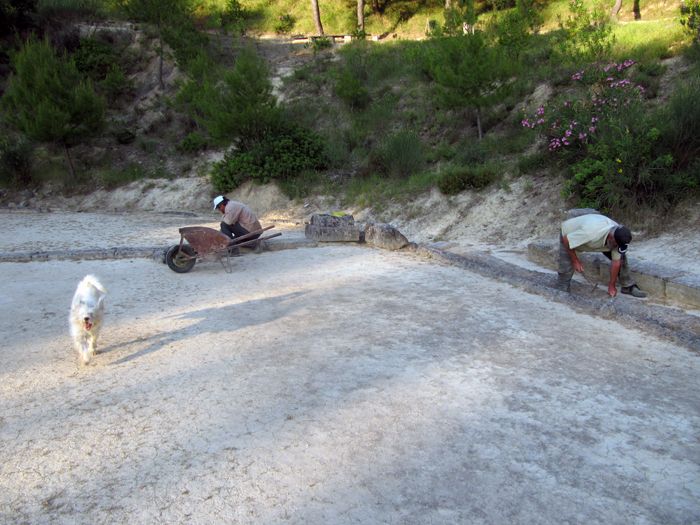
The drainage system in the locker room was also cleaned out after a winter of particularly heavy rain had clogged it with silted earth.
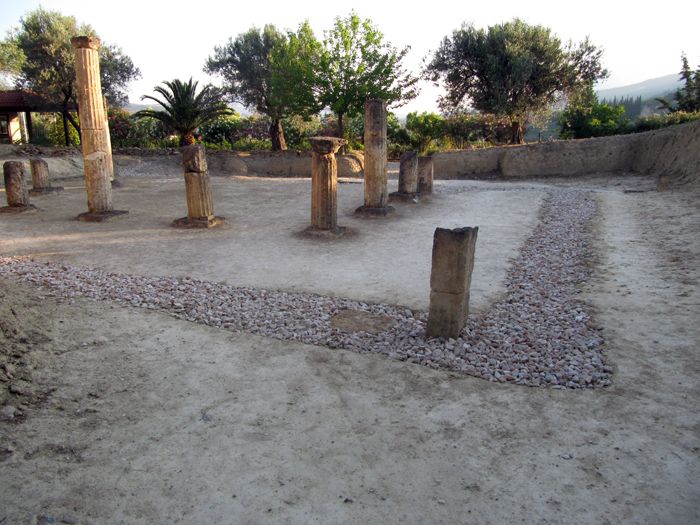
The gates to the stadium had become very rusted over the years, and we scraped and gave them a fresh coat of paint.
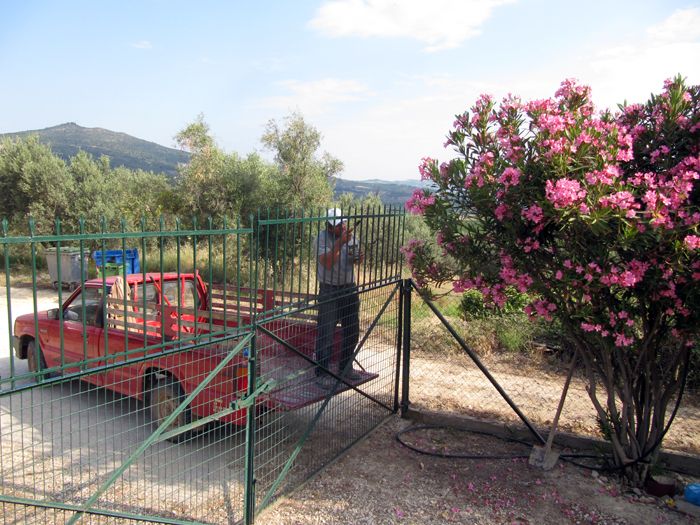
Another problem was with several signs directing visitors to the site. They had become faded and, in some cases, broken and illegible. Some also exhibited unfortunate English translations of Greek. Further, the usual color of signs for archaeological monuments has become yellow on brown. Our blue signs confused visitors.
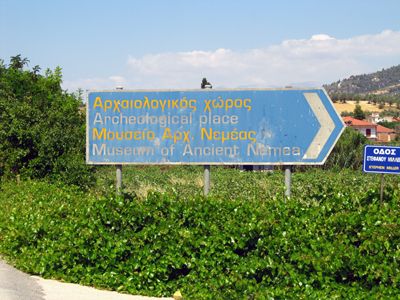
The Society undertook the initiative to have these signs changed and, thanks to the great help of Angelos Papangelopoulos, Konstantinos Kalantzis, and Nikos Kostouros, replacement signs were finished today in less than a week – a veritable miracle.
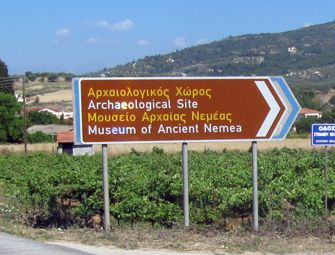
The final event of this lucky Friday the 13th was a visit from ICOMOS (International Council on Monuments and Sites) led by its President, Gustavo Araoz, and the President of the Greek Division of ICOMOS, Dr. Athanasios Nakasis.
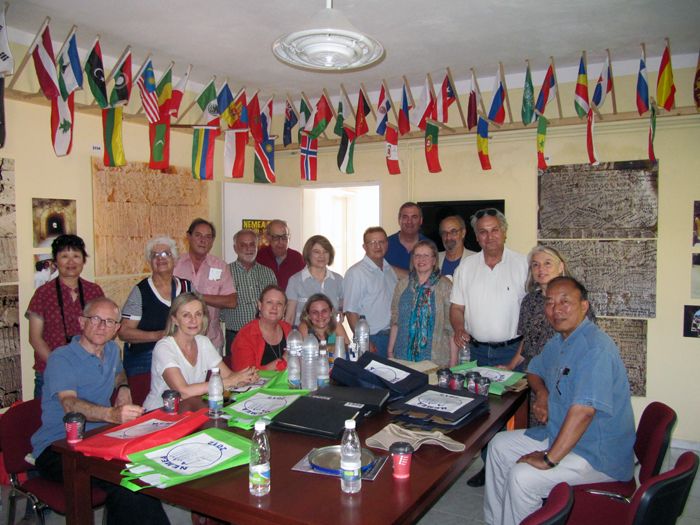
After a tour of the museum, the site, and the stadium, the group went to lunch, hosted by the City of Nemea, and then to the office of our Society. Their reactions were positive as can be seen, for example, in the comments in our guest book which included the following from Gideon Korren of the International group: “Congratulations for this remarkable project. Best wishes for its continuation, from the ancient land of Israel to the ancient land of Greece.” Kostas Katsigiannis of the Greek division said: “Warmest congratulations! May you have a good continuation in your work for the promotion of Nemea, and also of Greece.”